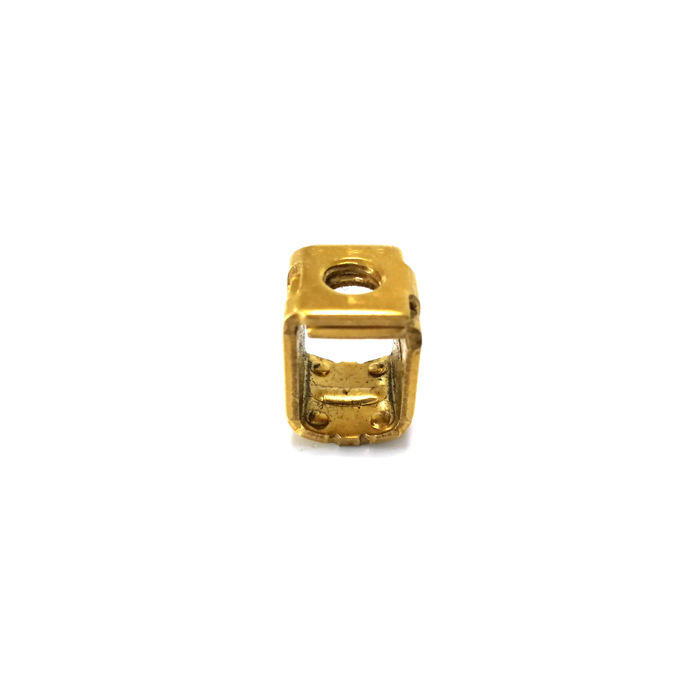
- English
- Español
- Português
- русский
- Français
- 日本語
- Deutsch
- tiếng Việt
- Italiano
- Nederlands
- ภาษาไทย
- Polski
- 한국어
- Svenska
- magyar
- Malay
- বাংলা ভাষার
- Dansk
- Suomi
- हिन्दी
- Pilipino
- Türkçe
- Gaeilge
- العربية
- Indonesia
- Norsk
- تمل
- český
- ελληνικά
- український
- Javanese
- فارسی
- தமிழ்
- తెలుగు
- नेपाली
- Burmese
- български
- ລາວ
- Latine
- Қазақша
- Euskal
- Azərbaycan
- Slovenský jazyk
- Македонски
- Lietuvos
- Eesti Keel
- Română
- Slovenski
- मराठी
- Srpski језик
Stamping Services Process Analysis: Let's Learn Together!
Stamping Services is to cut, separate and deform the material through the stamping machine to obtain stamping parts that meet the specific shape and size requirements. As an important means of metal processing, it involves cutting, separating and deforming the material to obtain stamping parts of the required shape and size.

The main steps of Stamping Services are: Raw material preparation: This includes material preparation and cutting to provide the necessary raw materials for subsequent processes. Blank heating: Sometimes in order to improve the cutting performance of the metal, the blank will be properly heated, but care should be taken to avoid temper brittleness caused by overheating. The heating temperature needs to be finely adjusted according to the material properties, blank type and specific process requirements. Forming process: By using various dies, the material is plastically deformed to achieve the shape and accuracy required by the drawing. Blanking process: Use the stamping die to punch out the required holes or grooves on the sheet to give the stamping part a specific shape. Finishing process: Including the shaping, trimming, fine cutting and pickling of the stamping parts to further improve the quality and accuracy of the product.
Stamping Services has a place in the metal processing field with its unique process characteristics, which mainly include:
High production efficiency: In stamping processing, the reuse rate of molds is extremely high, which shortens the production cycle. The entire process is basically mechanized, which greatly improves production efficiency. Efficient material utilization: The design of stamping parts can usually achieve less or even no excess processing, while maintaining high precision, so as to maximize material utilization. Suitable for mass production: Stamping processing is particularly suitable for large-scale and high-output enterprises. It can ensure product quality while effectively reducing costs. Complex parts processing capability: Stamping technology can produce a variety of complex parts, such as sheet metal parts, covers, etc., showing its wide adaptability in the manufacturing field. Good working conditions: During the stamping process, due to the high degree of mechanization, the noise and pollution generated are usually small, providing workers with a relatively good working environment.
Stamping Services can be further classified into two categories according to the processing methods in production: separation process and forming process. The separation process is mainly to separate the blank into workpieces and waste of the required shape under room temperature or low temperature softening treatment. The forming process is more complicated, involving multiple stretching, bending, flanging, trimming and other forming processes of the sheet metal on a press or drawing machine to form parts of various complex shapes. Commonly used forming parts include punches, concave dies, bending dies, etc. Their design varies according to the flow direction of the sheet metal in the die, and can be divided into single-action and double-action forms.
Stamping Services occupies a pivotal position in the field of automobile manufacturing, and almost all metal parts cannot be separated from the blessing of this process. Among them, sheet metal stamping and forging are the two most widely used technologies in stamping. The construction of the body frame, doors, trunk lids, and core components such as body beams and bogies are all carefully crafted through the stamping process. In addition, many auxiliary parts such as vents, fenders, backrests, etc. are also derived from the exquisite craftsmanship of stamping. Although other pressure processing methods such as precision casting and precision forging may be used for parts with unique shapes or small production quantities, stamping is still the main means of mass production in the automotive industry. Its high production efficiency, excellent material utilization and processing characteristics of little or no cutting make stamping technology always occupy an indispensable position in the field of automobile manufacturing. With the continuous emergence of new molding technologies and high-quality materials, the application boundaries of stamping technology are continuously expanding.



